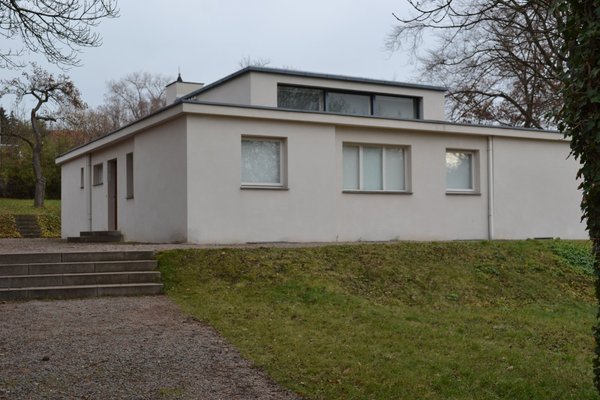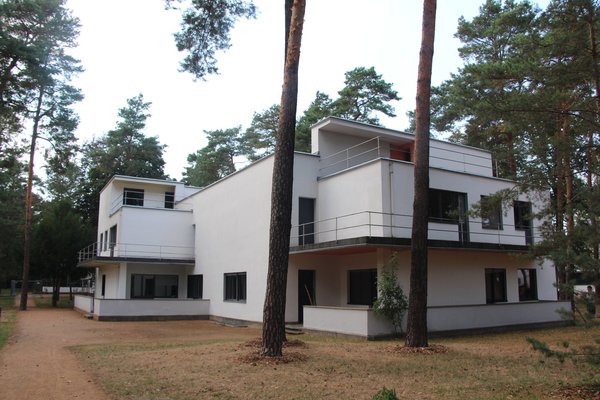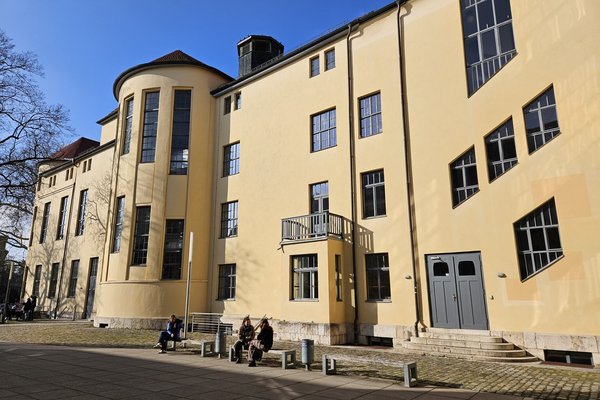Germany
Bauhaus Sites
Bauhaus and its Sites in Weimar, Dessau and Bernau represent the most prominent examples of the Bauhaus architectural school, which was the birthplace of Classical Modernism.
The "Staatliche Bauhaus" was responsible for the radical renewal of architecture and design. These seven (groups of) buildings represent both their initial phase in Weimar under Walter Gropius, and the second (and more successful) phase out of Dessau (with Hannes Meyer and Ludwig Mies van der Rohe). The Bauhaus building, made out of concrete, glass and steel, is a landmark in 20th-century architecture.
Community Perspective: This has received glowing reviews from the modern architecture-loving part of the WH community (Ian even wrote 3 reviews!). Taking a guided tour of the Bauhaus building is a good start to understanding their ideas.
Site Info
Official Information
- Full Name
- The Bauhaus and its Sites in Weimar, Dessau and Bernau (ID: 729)
- Country
- Germany
- Status
-
Inscribed 1996
Site history
History of Bauhaus Sites
- 2017: Extended
- To include five Houses with Balcony Access near southwest of Dessau-Roßlau and ADGB Trade Union School near Bernau
- 2017: Name change
- From "Bauhaus and its Sites in Weimar and Dessau" to "The Bauhaus and its Sites in Weimar, Dessau and Bernau"
- 1996: Inscribed
- Inscribed
- 1995: Deferred
- Bureau - more info on conservation plans etc
- Type
- Cultural
- Criteria
- ii
- iv
- vi
Links
- UNESCO
- whc.unesco.org
- Official
-
- bauhaus100.uni-weimar.de — Weimar
- bauhaus-dessau.de — Dessau
- Related
-
- hausamhorn.de — Official site from the Haus am horn
All Links
UNESCO.org
- whc.unesco.org — whc.unesco.org/
Official Website
- bauhaus100.uni-weimar.de — Weimar
- bauhaus-dessau.de — Dessau
Related Resources
- hausamhorn.de — Official site from the Haus am horn
News Article
- Sept. 11, 2019 newjersey.news12.com — German Chancellor Merkel opens new Bauhaus museum in Dessau
Community Information
- Community Category
- Secular structure: Science and Education
Travel Information
Saxony Anhalt hotspot
Berlin hotspot
Recent Connections
-
Universities
Two Buidings of Weimar University -
Saxony Anhalt hotspot
Main building of the Weimar Academy for… -
Berlin hotspot
ADGB Trade Union School near Bernau: "T…
Connections of Bauhaus Sites
- Individual People
-
-
Ludwig Mies Van Der Rohe
Was head of Bauhaus Dessau when it was closed
-
- Geography
- Trivia
-
-
In the MoMA
In room 511 a model of the Bauhaus Building in Dessau is on display. It was made in 1979. -
Depicted in Mizielinska Maps
Bauhaus DessauSee i.pinimg.com
-
Twin Towns
Weimar & Dessau
-
- Architecture
-
-
Curtain wall
Bauhaus building in Dessau: "In the building design, Gropius developed ideas that he had already applied at the construction of the Fagus Factory which he built with Adolf Meyer before the first World War. The glas facade or curtain wall is the central design element which defines the buildings aesthetics." (see link)See architectuul.com
-
International style
-
Reinforced Concrete
-
Designed by Walter Gropius
See en.wikipedia.org
-
Artists' houses
Masters Houses (Meisterhäuser) in Dessau: "there was Gropius' house and the double houses for Moholy-Nagy/Feininger, Muche/Schlemmer and Kandinsky/Klee"See en.wikipedia.org
-
- World Heritage Process
-
-
Extended
2017: To include five Houses with Balcony Access near southwest of Dessau-Roßlau and ADGB Trade Union School near Bernau -
Extended from original TWHS
Only Dessau - Bauhaus on GDR's Tentative List
-
- Human Activity
-
-
Frescoes or murals by famous painters
murals by Oskar Schlemmer at the Bauhaus UniversitySee www.diomedia.com
-
Ateliers
The Masters' Houses
-
- Constructions
-
-
Chairs
The Wassily Chair, also known as the Model B3 chair, was designed by Marcel Breuer in 1925–1926 while he was the head of the cabinet-making workshop at the Bauhaus, in Dessau, Germany. Despite popular belief, the chair was not designed specifically for the non-objective painter Wassily Kandinsky, who was on the Bauhaus faculty at the same time. Kandinsky had admired the completed design, and Breuer fabricated a duplicate for Kandinsky's personal quarters [i.e., Masters Houses]. (wiki)See en.wikipedia.org
-
- Timeline
-
-
Built in the 20th century
In 1919 the Schools of Art and of Applied Arts of the Grand Duchy of Saxony were combined to form the State Bauhaus of Weimar. The building of the former had been constructed in two phases, in 1904 and 1911 (AB ev)
-
- WHS Hotspots
-
-
Saxony Anhalt hotspot
Main building of the Weimar Academy for Architecture and Building Arts lies in Weimar -
Berlin hotspot
ADGB Trade Union School near Bernau: "There are around 47 trains per day running between Berlin and Bernau (b Berlin), which usually take 28 minutes to complete the 14 miles (22 km) journey." (trainline)
-
- Science and Technology
-
-
Universities
Two Buidings of Weimar University
-
News
- newjersey.news12.com 09/11/2019
- German Chancellor Merkel opens new…
Recent Visitors
Visitors of Bauhaus Sites
- Adrian
- Adrian Turtschi
- Afshin Iranpour
- Albert
- Alexander Barabanov
- Alexander Lehmann
- A. Mehmet Haksever
- Ammon Watkins
- AmyAbroad
- Ana Lozano
- AndreaTLV
- Anna Wludarska
- Argo
- Aspasia
- Assif
- a.thum
- Atila Ege
- awestix
- AYB
- Badwater
- Bamse
- BaziFettehenne
- Bernard Joseph Esposo Guerrero
- bethready
- Bill Maurmann
- Bin
- Birgitte Sørensen
- Bram de Bruin
- Brendan Carroll
- Can SARICA
- Carlos Sotelo
- Casey
- Caspar
- Cezar Grozavu
- cflw
- Chole Ross
- Christer Sundberg
- Christian Wagner
- christof
- Christoph
- Christravelblog
- Claire Bradshaw
- Clyde
- Cobaltrage
- Colossus
- Csaba Nováczky
- ctravel
- CugelVance
- Dagmara
- Dani Cyr
- Daniela Hohmann
- Daniel Chazad
- Daniel Gabi
- Danieljbromberg
- Daniel R-F
- David Berlanda
- Dimitar Krastev
- Dimitrios Polychronopoulos
- Dirk-pieter
- DL
- Dolemite92
- Dorejd
- Echwel
- Elia Vettorato
- Els Slots
- Emilia
- Emili Xaus
- erdsaumnaht
- Erik Jelinek
- Errol Neo
- Eva Kisgyorgy
- Evgenii
- fabi-ddorf
- Fan Yibo
- Farinelli
- Fede1203
- Federico P.
- Feldhase
- Femke Roos
- Filip Murlak
- FK
- FrankW
- Frederik Dawson
- FS
- Galgalula
- Gary Arndt
- George Gdanski
- GeorgeIng61
- GerhardM
- Harald T.
- Harry Mitsidis
- henrik_hannfors
- heywhatever2
- Hubert
- Hurrvinek
- Iain Jackson
- Ian Cade
- Ingrid
- Ivan Rucek
- Jacob Choi
- Jakob F.
- Janina Lehmann
- janis
- Janos
- Jan-Willem
- Jan Zimmermann
- Jarek Pokrzywnicki
- Jasam
- Javier Coro
- Jay T
- Jens
- Jezza
- JobStopar
- Joel on the Road
- Jonas Hagung
- Jonas Kremer
- Jon Eshuijs
- Joyce van Soest
- Juha Sjoeblom
- KarenBMoore
- Karito Vies
- Kasia M.
- KateY
- Kbecq
- Ken DJ
- Klaus Freisinger
- Knut
- KoenigMarke
- Kristin
- Krzysztof B
- Laetitia Yin
- Lara Adler
- LaVale
- lichia
- Lisu Marian
- Loic Pedras
- Luboang
- Lucio
- Ludvan
- Luis Filipe Gaspar
- Maciej Gil
- Maciej Gowin
- Malgorzata Kopczynska
- Małgosia Łupicka
- marcel staron
- Martin
- Martina Rúčková
- Matejicek
- MaxHeAnouBen
- MaYumin
- MH
- Michael Novins
- michaelsballard
- Michael Turtle
- Mikan22
- Mikko
- Miloš Tašković
- miri2808
- MMM
- Mohboh
- nan
- natlefebvre@hotmail.
- Nick M
- Nihal Ege
- Nikolay Marinov
- PabloNorte
- Palimpsesto
- Patrik
- Paul Schofield
- peacemaker2142
- Peltzi
- Peter Lööv
- pete_simms
- Petteri
- Philipp Leu
- Philipp Peterer
- Piotr Wasil
- PlacesWeHaveBeenTo
- Potsdamer
- pressdm
- Purrfect
- Qin Xie
- Rafał Kałczuga
- Ralf Regele
- Randi Thomsen
- ReallyDeepThoughts
- Reisedachs
- Reza
- Rick Ohm
- RobRos
- Rodinia
- Roel Sterken
- rogerding
- Roger Ourset
- Roman Bruehwiler
- Roman Raab
- Ronbon
- Rudegirl
- Sabrina Liebehentschel
- Sandmann15
- Schnitzel
- scubarrie
- Sebasfhb
- Sehnsuchtsbummler
- serghei.belous
- Sergio Arjona
- Shandos Cleaver
- shoaibmnagi
- sncjob
- Solivagant
- Stanislaw Warwas
- Stefan A. Michelfeit
- Stijn
- Svein Elias
- Szucs Tamas
- Tamara Ratz
- Taotao Chen
- Tarquinio_Superbo
- Tcchang0825
- Thomas Buechler
- Thomas van der Walt
- Thorben
- Tingying He
- Tom Flaten
- Tommy W
- tony0001
- triath
- Tsunami
- Twobaconsandaboston
- Vanessa Buechler
- VB73
- Veronica
- viktor_balandin
- Vincent Cheung
- VLabhard
- WalGra
- Walter
- Westwards
- Wojciech Fedoruk
- wrung24
- Xiong Wei
- Xiquinho Silva
- Yang Chengyu
- YaroMir
- Yevhen Ivanovych
- Zhenjun Liu
- Zoë Sheng
- Zos M
Community Reviews
Show full reviews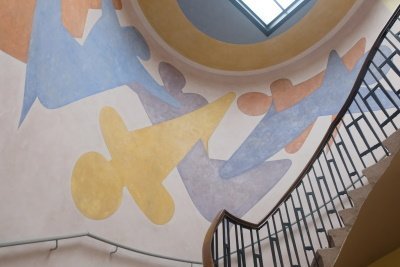
If I were to pick the most special WHS I've seen this year, it would have to be the Bauhaus sites. It is not because they are beautiful and grand, but more because of the impact they have made to the world. I myself was surprised to find out that something so common and recent could still be so interesting! Modern architecture and modern designs as we know today have largely been shaped by this school of thought. Its influences are still apparent today, and they, perhaps, are even more relevant now than they were ever before.
My visit in Germany could not be more timely: the Bauhaus celebrates its 100th year anniversary this 2019. I was able to trace back the evolution of this school of thought beginning with a visit to Weimar where it all started in 1919. There, I even witnessed a class performance (Bauhaus in action?) at the "Bauhaus Box" beside the administration building. Next, I went to Dessau where the Bauhaus reached its period of initial blossoming, and then to Berlin where its principles were extended and applied for the greater good, i.e., when Walter Gropius took part in the creation of the Grosssiedlung Siemensstadt (of the Berlin Modernist Housing Estates-WHS).
I have also seen works of other Bauhaus masters such as that of Mies van der Rohe in the Weissenhofsiedlung in Stuttgart. And when I thought I have already had enough of Bauhaus, I got an assignment to go to Israel, …
Keep reading 0 comments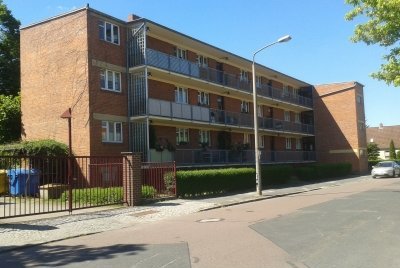
I have visited all sites in Weimar and Dessau. Two University buildings in Geschwister-Scholl-Strasse in Weimar are not spectacular but very pleasant sites with relaxed cafe - worth-visiting and -inscription anyway. The Haus am Horn (seen from outside) is also not spectacular but I can understand at least its importance. However, I would prefer living in nearby Goethe house...
The main BAUHAUS building and Masters` hauses in Dessau are superb, and they belong to my top-sites I have ever visited (everything described by other reviewers).
However, the extensions in 2017 are a bit problematic from my point of view. I could see the Hauses with balcony access (photo) during my trip to Dessau. Though they are important examples of application of bauhaus ideas in everyday life, I am not sure if they deserve to be inscribed as WHS. My opinion is that this is a typical example of approach that the iconic site is degraded by adding of more and more components. I am able to understand reasons and that Germany did painstaking work to cover all aspects of Bauhaus, but... it should have certain limits. The hauses are located in southern suburb of Dessau accessible by tram from the city center. This part of Dessau is worth-visiting for modern architecture enthusiast, because there is fine ensamble of buildings from first half of 20th century. Another interesting and nice building is the Employment Office designed by Walter Gropius (August-Bebel-Platz 16) with unique disposition. Despite of historical, architectonic and …
Keep reading 0 comments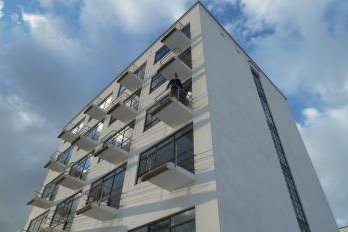
Eight years ago I wrote about how, for fans of modern art and architecture, a trip to the Bauhaus is less 'a visit' and more 'a pilgrimage'. In the intervening period it has been the greatest delight in my life to have met and married someone who shared my giddy excitement about this building. As such the night we spent staying in the former student accommodation was one that will stay long in our memory.
It was near impossible to wipe the smile off of our faces when we checked in at the nice cafe and realised we had been given the keys to the front door of the Bauhaus!
The whole evening consisted of us wandering around anywhere in the building that we could access with our set of keys, we were like kids in a candy-shop. We excitedly wondered who may have lived in our room, Josef and Anni Albers perhaps? I was also struck by how similar it was to my own Central European university dorm room, again showing the effect this institution has on everyday life.
Every aspect of the building seemed to enthral us from the Gropius handles to the stools in the Mensa it is fair to say that we were giddily geeking out at the smallest details but as Mies would say that is where God resides.
But beyond appealing to those already converted I felt that the audio guide and museum exhibits did a great job of explaining the importance …
Keep reading 0 comments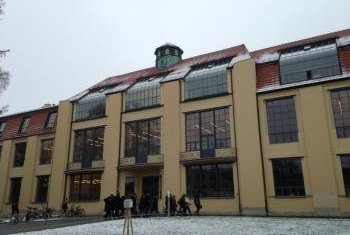
Having now visited the site in Weimar I can now understand the lukewarm reviews of what is one of my favourite German WHS.
If you are just visiting to tick it off then it really isn't much more than some well-designed academic buildings. Architecturally interesting but not spectacular, it sort of feels like any other European university, and whilst there are real links to the schools artistic heritage I just didn't feel like I was somewhere particularly important.
It wasn’t until we were walking through the the central building that we discovered there were tours offered, perhaps the site would have made more sense with them.
On the whole it isn't really that interesting and when it is viewed as a detour from central Weimar is somewhat underwhelming.
My advice, if you are wanting to get the best out of this World Heritage Site, make the trip to Dessau.
Site 4: Experience 3
Keep reading 0 comments
To see all of the Bauhaus buildings included in the World Heritage Site, you’ll need to visit two German cities – Weimar and Dessau, which are about 150 kilometres apart.
In Weimar, the former Art College and the School of Arts and Crafts are now part of a university and you are able just to walk in and have a look at the buildings for yourself. There are also city tours available which include these sites.
The Haus am Horn is about 20 minutes walk from the university buildings and is a small residence in the Bauhaus style. It is only open on Wednesday, Saturday and Sunday between April and September.
If you can only visit one of the cities, then Dessau is probably the better option. The main Bauhaus building is a true representation of what the movement stands for and also has a shop and museum with some of the design examples that were developed at the same time.
The nearby Masters’ Houses show more of a progression in the Bauhaus principles than the residence in Weimar and are also easier to access because they are all open to the public most of the year.
Keep reading 0 comments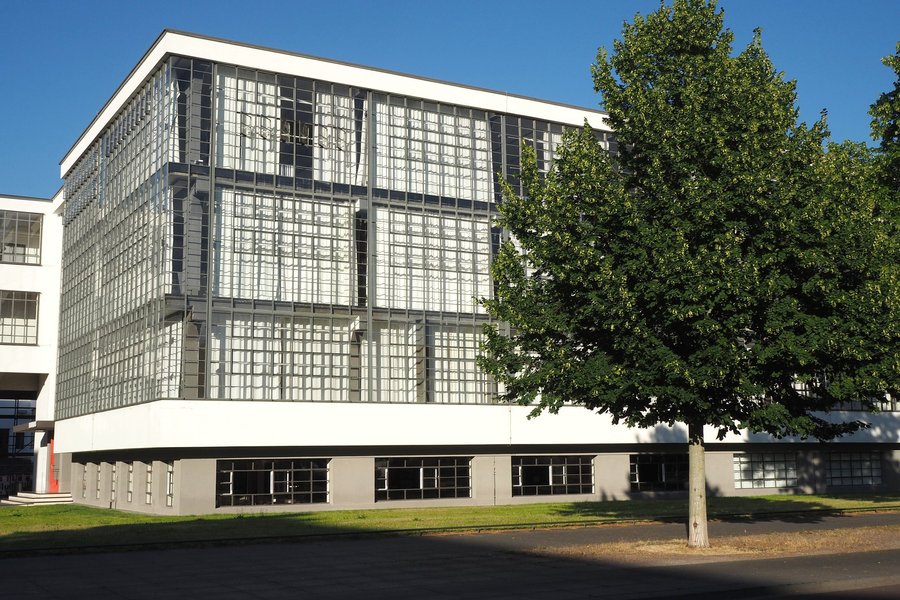
As much as I liked the classical sites of Weimar, I was not overly impressed with the Bauhaus sites in this town. I took a look inside the Bauhaus University and walked around the other buildings, but could not find anything really interesting (I am admittedly not a big fan of modern architecture in general). There is a reasonably interesting (but quite small) Bauhaus Museum as well (directly opposite the National Theatre and the famous statue of Goethe and Schiller). A few years after my visit to Weimar (2015), I finally made it to Dessau as well (2019). I have to say, though, that I visited more for the sake of "completing" a site rather than genuine interest. I took a quick walk through the main building (without a guided tour) and then went to see the nearby Masters' houses. I understand the importance and influence of this site, but for me, it was rather about visiting Weimar and Dessau for their other WH sites and ticking off the Bauhaus along the way.
Keep reading 0 comments
I visited the Bauhaus sites in Weimar in June 2013. The University and Goethe's garden house were interesting to visit but the highlight in Weimar is the Haus am Horn. I'm no architecture buff and it most certainly is NOT a spectacular sight to see ... but when I considered WHEN it was built and how this influenced the way apartments are built today, I got to appreciate its OUV and look forward to visiting Dessau in the near future. I still very much prefer the Rietveld Schroderhuis in Utrecht but at least such important buildings are open to the public so I was happy enough to be able to visit.
Keep reading 0 comments
On my stay in Weimar we visited the two sites of the Bauhaus nomination that are there: the Bauhaus University and Haus am Horn.
Haus am Horn was built as a model and is therefore very very small. Unfortunately, it was closed so we could only admire the exterior. This was pretty underwhelming, mainly compared with such sites as Tel Aviv or Villa Tugendhat. Maybe a tour through the building would have made it look more important.
The Bauhaus University is, on the other hand, a living building with students and lecturers moving around it. It preserved its original design and I find it worthy of visit not only for historic reasons, but also for architectonic ones.
Keep reading 0 comments
The impact of the Bauhaus on modern architecture and design is undoubtedly immense. Everyone can find traces of these ideas in his everyday live: buildings, furniture and objects of daily use. Although the Bauhaus School was founded in Weimar in 1919, the building in Dessau (photo) designed by Walter Gropius is the symbol of the Bauhaus idea: the unity of art and technology based on function. The glass curtain walls are striking, Gropius has used this element for the first time at the Fagus Factory. I would recommend to take a guided tour, even though they are in German language. The tour takes you through many parts of the building that are not open to individual visitors: the auditorium, the cafeteria, the director's office, a student flat. Everywhere you can see examples (such as door handles, furniture, lamps) that the interior design follows the same principles as the architecture.
The Masters' Houses are just a few minutes away from the school building and well worth a visit. After the move from Weimar to Dessau, Gropius designed three twin-houses for the Bauhaus masters and a single house for the director himself. Although the houses are constructed from the same basic elements, the interiors were designed differently according to the tastes of the residents. The house of Gropius and one half of a Master's House were destroyed in the WWII. In 2011/2012, both buildings are going to be reconstructed in their original form.
There are other examples of the Bauhaus architecture in …
Keep reading 0 comments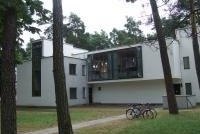
I visited the Bauhaus Museum and the Masters' Houses in Dessau, a housing estate in Dessau-Sud as well as the Bauhaus University and the Haus am Horn in Weimar. Whilst I realise that in the 1920s and 30s this architecture was exceptional, 80 years later it is commonplace, so I wonder why they are WHS. Is it enough that they were the first to justify the listing.
Keep reading 0 comments
I visited the house in Weimar, at the edge of the park, the grounds of the local Schloss....Goethe lived there for some time also about 200 m away in his time.
I walked the inside and found it ample and practical.
The active and bedrooms located around the living-room with its elevated and windowed atrium was at the comfortable center of the place. It can only be compared with an Adobe style house of the Navaho, they also went vertical in tiers.
B. Meyer
Canada
Keep reading 0 comments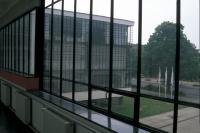
When one thinks about it there are not too many cultural sites on the list about which one can say that “here emerged ideas which have impacted my daily life”. The Bauhaus is such a place – in terms of the buildings I have worked in, the chairs I have sat on, the consumer goods I have used etc. A truly “Imaginative” WHS both for what it achieved AND for being selected! A refreshing change from the turgid lists of minor religious buildings! OK – so no “idea” starts solely in 1 place, much “Bauhaus thought” predated the organisation and even the Bauhaus itself came from Weimar (which the inscribed site includes) but I still felt a frisson from walking the corridors of the School in Dessau and looking out of these windows – a frisson I have found missing at many more supposedly “significant” sites. There are several "bauhaus buildings" in the town - not all on the inscribed list - I rather liked the Restaurant near the river which for some reason wasn't included.
Keep reading 0 comments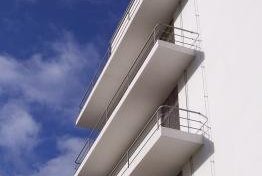
If your idea of a good World Heritage site is a historic city centre, then this is perhaps not the best place to visit as arriving from the train station the Bauhaus itself could easily be mistaken for any other municipal building pretty much anywhere in the world. However if like me you have a keen interest in modern architecture or design this is less a visit and more a pilgrimage.
The main building of the Bauhaus was designed by Walter Gropius after the school was forced to relocate due to political changes in Wiemar. Gropius is one of the key architects of the twentieth century and this building is his masterpiece. As I have already said it seems to look like many other buildings throughout the world, however it would be more accurate to say that all the other buildings look like this one.
It feels instantly familiar being like the buildings I have used for everything in my life; schools, housing blocks, offices and hospitals and this is where its great value lies. Many of the aims of the Bauhaus have been corrupted, as shown by the particularly expensive gift shop, however the international spread of ideas and objects pioneered in this building are undeniable.
I would recommend taking the guided tour, it was only available in German however it allows you to see much more of the building, especially impressive was the main auditorium, and the office from which Gropius and later Mies Van Der Rohe (a …
Keep reading 0 comments
The video in the Bauhaus Museum in Weimar is a perfect introduction to the history of the Bauhaus school. It was literally a school: with pupils (men and women), a curriculum and inspirational teachers. A half-year introduction course with a strong theoretical emphasis (and some meditation!) was mandatory. After that, the students were trained by both artists and craftsmen.
The museum exhibits documents related to Bauhaus history and shows several functional objects made by Bauhaus artists. Some chairs and household utensils are still being produced. I found it really worth visiting.
I also had a look at the three WH-listed Bauhaus monuments in Weimar. The Haus am Horn is situated in a residential street near Weimars classical monuments in the Park on the Ilm. It's a simple building. The two buildings that housed the Art Schools are also preserved quite well. One can almost imagine the long-haired, artsy students coming and going.
Keep reading 0 comments


